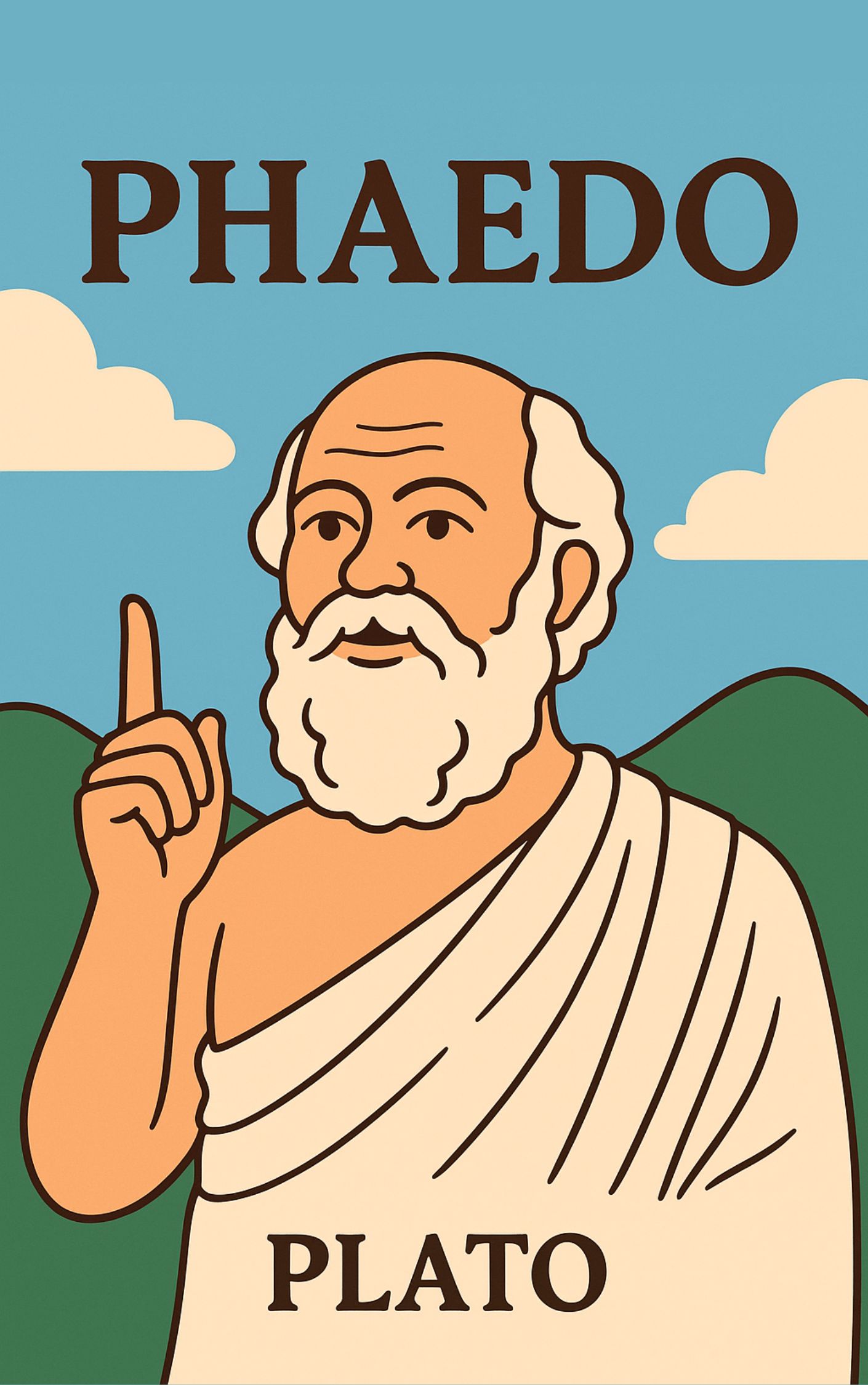Description
Plato’s Phaedo is one of the most moving and profound dialogues ever written. It is set on the day of Socrates’ execution, and it captures his final hours with his closest followers. Instead of mourning or expressing fear, Socrates spends this time discussing the nature of life, death, and the soul. His calm acceptance of death and his deep belief in the immortality of the soul turn this conversation into something timeless.
The central idea of the dialogue is that our soul is eternal. While the body is fragile, subject to sickness, aging, and decay, the soul does not perish. It continues on, moving into another realm after the death of the body. This idea is not presented with sadness but with hope. Socrates believes that death is not an ending but rather a transition, a doorway to something greater.
To understand this better, think of life and death not as two separate things, but as two sides of the same journey. Imagine a river flowing from a mountain peak. It travels through valleys, forests, and plains, shaping everything in its path. Finally, it merges into the sea. The river doesn’t end at the sea; instead, its waters rise again as clouds, fall as rain, and begin the journey anew. In the same way, Socrates suggests that the soul flows endlessly, changing forms but never ceasing to exist.
This view transforms the way we might see our own lives. Instead of focusing only on physical needs, material wealth, or fleeting pleasures, Socrates encourages us to live with a deeper purpose. For him, philosophy—the love of wisdom—is not just an intellectual pursuit, but a way of caring for the soul. To live as a philosopher is to prepare the soul for its journey beyond death.
Socrates explains that the true philosopher does not fear death, because death frees the soul from the body. The body, with all its distractions and needs, often clouds our judgment and keeps us tied to worldly desires. The soul, when released, is able to seek truth and understanding more clearly. In this sense, philosophy is like a practice for dying—not in a morbid way, but in the sense of training the soul to detach from the body and to focus on eternal truths.
One of the key points made in the dialogue is that knowledge is not something we simply gain through our senses. Instead, knowledge already exists within the soul. When we learn something new, we are actually remembering truths that the soul has always known. This supports the idea that the soul existed before birth and will continue after death.
Socrates offers several arguments for the immortality of the soul. He suggests that everything comes from its opposite: life comes from death, and death from life. This cycle implies that souls continue to exist after death, waiting to be reborn. He also argues that the soul is most like eternal things—unchanging, invisible, and pure. Since it resembles what is eternal, it too must be eternal.
The dialogue also touches on how we should live if we accept the soul’s immortality. If life is preparation for what comes after, then we should live wisely and justly. Seeking truth, practicing self-control, and nurturing our inner selves become far more important than chasing wealth or fame. The way we treat others and the choices we make every day help shape the condition of our soul.
There is also a lesson about courage. Socrates shows remarkable calmness as he prepares for death. His disciples are heartbroken, but he reassures them. For Socrates, to fear death would be to show ignorance. If the soul continues its journey, there is no need to fear. And even if death were nothing at all, simply a deep sleep without dreams, then it would not be something terrible either. This fearless acceptance is one of the most powerful lessons of the dialogue.
Socrates drinks the poison calmly, without complaint, and spends his last moments reminding his friends to care for their own souls. His final words are simple yet meaningful: a request to make an offering of thanks, as if even death itself were a kind of blessing. His peaceful departure leaves a lasting impression, not just on his friends, but on everyone who reads this dialogue.
The story of Phaedo continues to inspire because it challenges us to rethink how we see life and death. Instead of fearing death as an ending, we can view it as part of a larger journey. Instead of clinging to the body and its temporary pleasures, we can focus on nurturing the soul, seeking wisdom, and preparing ourselves for what comes next.
When we apply this lesson to our own lives, it changes our perspective. Difficulties and hardships no longer feel like random suffering, but as opportunities to strengthen the soul. Joys and achievements, too, can be seen as part of a greater path, not merely as temporary victories. Most importantly, the idea that the soul is eternal can bring comfort. It suggests that nothing essential about us is ever truly lost.
In the end, Phaedo is not just a philosophical argument. It is also a story of courage, wisdom, and peace. Socrates’ calmness in the face of death teaches us that philosophy is not about abstract theories, but about how we live and how we face the inevitable. The dialogue gives us a vision of life as a training ground for the soul and death as a release into a greater reality.
To summarize, Plato’s Phaedo presents the soul as immortal, life as preparation, and death as a transition rather than an end. Socrates’ final words and actions embody this philosophy, leaving behind not fear, but a legacy of peace and clarity. For us, the message is simple yet profound: care for your soul, seek wisdom, and embrace life as part of an eternal journey.





